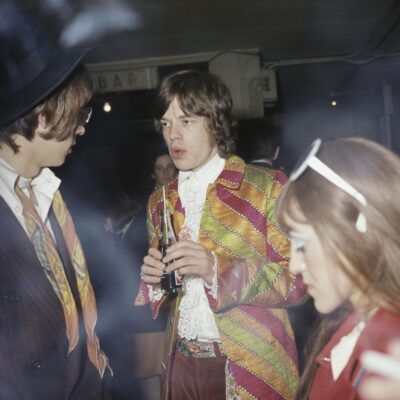
Fashion & History 15.04.2025
14.07.2018
1970sfashion historyflaresrevivalism
Retracing the history of an iconic shape
Many styles that are now seen on the streets come from unexpected places. Not all designs, in fact, are born exclusively in ateliers and design studios; the biographies of many of the most iconic objects tell us something about the fascinating ways in which styles are created and also disseminated. ‘Flares’ trousers, for example, have become a symbol of 1960s-70s fashion, even if the story of their origins is quite different from the atmosphere of those years.
Also called bell-bottom because of their shape, flares originated in the early 19th century, when some sailors serving in the US Navy started wearing these kind of trousers, since no uniform was set for them yet. The style was later adopted by the British Royal Navy, which adopted the flares as part of the official uniform around the mid-19th century. Actually, these “bell-bottoms” were often wide-legged trousers that could be rolled up easily and were therefore functional for sailors.
The decades that saw the passage from the functional uniform of sailors to mainstream fashion were the 1960s and, above all, the 1970s. In the 1960s, they were usually worn with Cuban-heeled shoes, clogs, or Chelsea boots. In the 1970s, Sonny Bono and Cher made flares iconic by wearing them on air, during their television show. The pants flared from the knee down, and many variants were developed: ‘Loon pants’ were even more flared, usually worn by go-go dancers; another kind were the so-called ‘Elephant bells’, which were similar to loon pants but longer, covering the high-heeled shoes popular in the 1970s, and made of denim.
Flares made their comeback in the second half of the 1990s with a new name: boot-cut, since the flare was not so wide. Now pants with very wide flares are back in fashion, enriched by ruffles and other embellishments; not only can they be found on the runways of famous fashion designers, drawing the audience back to the references that inspired the designs, but also in the collections of major high street brands: a sign of the popularity of this style at various levels of the producer and consumer chain.
It is interesting to see how the narrative surrounding flares has developed through the media. The images illustrating this article were collected by Stockholm University as part of their collaboration with Europeana Fashion to preserve digital heritage. They are screenshot from an article published in 2015 by The Guardian, visually retracing with archival images the history not only of the object itself, but of the style that it came to be the symbol of.